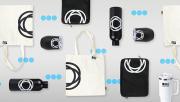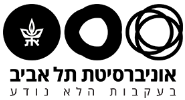1. Dsilva, A., et al., Distinct roles for thymic stromal lymphopoietin (TSLP) and IL-33 in experimental eosinophilic esophagitis. bioRxiv, 2025.
2. Margalit Grigg, L., et al., NLRP3 Deficiency in Nonimmune Cells Averts Obesity-Induced Fatty Liver Disease. Lab Invest, 2024. 104(2): p. 100308.
3. Hubel, E., et al., Sortilin in Biliary Epithelial Cells Promotes Ductular Reaction and Fibrosis during Cholestatic Injury. Am J Pathol, 2024. 194(6): p. 941-957.
4. Hammoud, R., et al., Glucose-dependent insulinotropic polypeptide receptor signaling alleviates gut inflammation in mice. JCI Insight, 2024. 10(3).
5. Avlas, S., et al., Epithelial cell-expressed type II IL-4 receptor mediates eosinophilic esophagitis. Allergy, 2023. 78(2): p. 464-476.
6. Shimshoni, E., et al., Distinct extracellular-matrix remodeling events precede symptoms of inflammation. Matrix Biol, 2021. 96: p. 47-68.
7. Efimova, I., et al., GIPR Signaling in Immune Cells Maintains Metabolically Beneficial Type 2 Immune Responses in the White Fat From Obese Mice. Front Immunol, 2021. 12: p. 643144.
8. Cohen, K., et al., COMMD10 is critical for Kupffer cell survival and controls Ly6C(hi) monocyte differentiation and inflammation in the injured liver. Cell Rep, 2021. 37(7): p. 110026.
9. Zigmond, E. and C. Varol, Two Roads Diverge in the Sick Liver, Monocytes Travel Both. Immunity, 2020. 53(3): p. 479-481.
10. Nogiec, A., et al., Phenotype and Response to PAMPs of Human Monocyte-Derived Foam Cells Obtained by Long-Term Culture in the Presence of oxLDLs. Front Immunol, 2020. 11: p. 1592.
11. Klepfish, M., et al., LOXL2 Inhibition Paves the Way for Macrophage-Mediated Collagen Degradation in Liver Fibrosis. Front Immunol, 2020. 11: p. 480.
12. Ginhoux, F., et al., Editorial: Monocyte Heterogeneity and Function. Front Immunol, 2020. 11: p. 626725.
13. Varol, C., Tumorigenic Interplay Between Macrophages and Collagenous Matrix in the Tumor Microenvironment. Methods Mol Biol, 2019. 1944: p. 203-220.
14. Reichman, H., et al., Activated Eosinophils Exert Antitumorigenic Activities in Colorectal Cancer. Cancer Immunol Res, 2019. 7(3): p. 388-400.
15. Mantelmacher, F.D., et al., GIP regulates inflammation and body weight by restraining myeloid-cell-derived S100A8/A9. Nat Metab, 2019. 1(1): p. 58-69.
16. Ben Shlomo, S., et al., COMMD10-Guided Phagolysosomal Maturation Promotes Clearance of Staphylococcus aureus in Macrophages. iScience, 2019. 14: p. 147-163.
17. Bar-David, S., et al., Size and lipid modification determine liposomal Indocyanine green performance for tumor imaging in a model of rectal cancer. Sci Rep, 2019. 9(1): p. 8566.
18. Arbel Rubinstein, T., et al., Klotho suppresses colorectal cancer through modulation of the unfolded protein response. Oncogene, 2019. 38(6): p. 794-807.
19. Varol, C. and I. Sagi, Phagocyte-extracellular matrix crosstalk empowers tumor development and dissemination. FEBS J, 2018. 285(4): p. 734-751.
20. Reuveni, D., et al., The Critical Role of Chemokine (C-C Motif) Receptor 2-Positive Monocytes in Autoimmune Cholangitis. Front Immunol, 2018. 9: p. 1852.
21. Mouhadeb, O., et al., Impaired COMMD10-Mediated Regulation of Ly6C(hi) Monocyte-Driven Inflammation Disrupts Gut Barrier Function. Front Immunol, 2018. 9: p. 2623.
22. Zigmond, E. and C. Varol, With Respect to Macrophages, Judge the Liver by Its Cover. Immunity, 2017. 47(2): p. 219-221.
23. Shifrin, H., et al., Cholinergic Anti-Inflammatory Pathway Does Not Contribute to Prevention of Ulcerative Colitis by Novel Indoline Carbamates. J Neuroimmune Pharmacol, 2017. 12(3): p. 484-491.
24. Moshkovits, I., et al., A key requirement for CD300f in innate immune responses of eosinophils in colitis. Mucosal Immunol, 2017. 10(1): p. 172-183.
25. Mantelmacher, F.D., et al., Glucose-Dependent Insulinotropic Polypeptide Receptor Deficiency Leads to Impaired Bone Marrow Hematopoiesis. J Immunol, 2017. 198(8): p. 3089-3098.
26. Graubardt, N., et al., Ly6C(hi) Monocytes and Their Macrophage Descendants Regulate Neutrophil Function and Clearance in Acetaminophen-Induced Liver Injury. Front Immunol, 2017. 8: p. 626.
27. Gilboa, D., et al., Erythropoietin enhances Kupffer cell number and activity in the challenged liver. Sci Rep, 2017. 7(1): p. 10379.
28. Afik, R., et al., Tumor macrophages are pivotal constructors of tumor collagenous matrix. J Exp Med, 2016. 213(11): p. 2315-2331.
29. Varol, C., A. Mildner, and S. Jung, Macrophages: development and tissue specialization. Annu Rev Immunol, 2015. 33: p. 643-75.
30. Zigmond, E., et al., Low-level light therapy induces mucosal healing in a murine model of dextran-sodium-sulfate induced colitis. Photomed Laser Surg, 2014. 32(8): p. 450-7.
31. Zigmond, E., et al., Infiltrating monocyte-derived macrophages and resident kupffer cells display different ontogeny and functions in acute liver injury. J Immunol, 2014. 193(1): p. 344-53.
32. Zigmond, E., et al., Macrophage-restricted interleukin-10 receptor deficiency, but not IL-10 deficiency, causes severe spontaneous colitis. Immunity, 2014. 40(5): p. 720-33.
33. Varol, C., et al., Long-acting glucose-dependent insulinotropic polypeptide ameliorates obesity-induced adipose tissue inflammation. J Immunol, 2014. 193(8): p. 4002-9.
34. Li, H., et al., Copper metabolism domain-containing 1 represses genes that promote inflammation and protects mice from colitis and colitis-associated cancer. Gastroenterology, 2014. 147(1): p. 184-195 e3.
35. Khatib, M., et al., Discriminatory metabolic and inflammatory parameters in serum and omental adipose tissue of obese patients with different insulin sensitivity. J Clin Transl Endocrinol, 2014. 1(3): p. 115-119.
36. Zvibel, I., et al., Transcriptional profiling identifies genes induced by hepatocyte-derived extracellular matrix in metastatic human colorectal cancer cell lines. Clin Exp Metastasis, 2013. 30(2): p. 189-200.
37. Ben-Shlomo, S., et al., Role of glucose-dependent insulinotropic polypeptide in adipose tissue inflammation of dipeptidylpeptidase 4-deficient rats. Obesity (Silver Spring), 2013. 21(11): p. 2331-41.
38. Zigmond, E., et al., Ly6C hi monocytes in the inflamed colon give rise to proinflammatory effector cells and migratory antigen-presenting cells. Immunity, 2012. 37(6): p. 1076-90.
39. Niv-Spector, L., et al., Preparation and characterization of mouse IL-22 and its four single-amino-acid muteins that act as IL-22 receptor-1 antagonists. Protein Eng Des Sel, 2012. 25(8): p. 397-404.
40. Zigmond, E., et al., Utilization of murine colonoscopy for orthotopic implantation of colorectal cancer. PLoS One, 2011. 6(12): p. e28858.
41. Shpilman, M., et al., Development and characterization of high affinity leptins and leptin antagonists. J Biol Chem, 2011. 286(6): p. 4429-42.
42. Varol, C., E. Zigmond, and S. Jung, Securing the immune tightrope: mononuclear phagocytes in the intestinal lamina propria. Nat Rev Immunol, 2010. 10(6): p. 415-26.
43. Varol, C., S. Yona, and S. Jung, Origins and tissue-context-dependent fates of blood monocytes. Immunol Cell Biol, 2009. 87(1): p. 30-8.
44. Varol, C., et al., Intestinal lamina propria dendritic cell subsets have different origin and functions. Immunity, 2009. 31(3): p. 502-12.
45. Varol, C., L. Landsman, and S. Jung, Probing in vivo origins of mononuclear phagocytes by conditional ablation and reconstitution. Methods Mol Biol, 2009. 531: p. 71-87.
46. Shechter, R., et al., Infiltrating blood-derived macrophages are vital cells playing an anti-inflammatory role in recovery from spinal cord injury in mice. PLoS Med, 2009. 6(7): p. e1000113.
47. Varol, C., et al., Monocytes give rise to mucosal, but not splenic, conventional dendritic cells. J Exp Med, 2007. 204(1): p. 171-80.
48. Landsman, L., C. Varol, and S. Jung, Distinct differentiation potential of blood monocyte subsets in the lung. J Immunol, 2007. 178(4): p. 2000-7.





![פרופ' חן [חן ורול] ורול פרופ' חן [חן ורול] ורול](https://www.tau.ac.il/sites/default/files/styles/research_teaser_image_180_x_180/public/Varol_0.jpg?itok=XruqUBIA)
